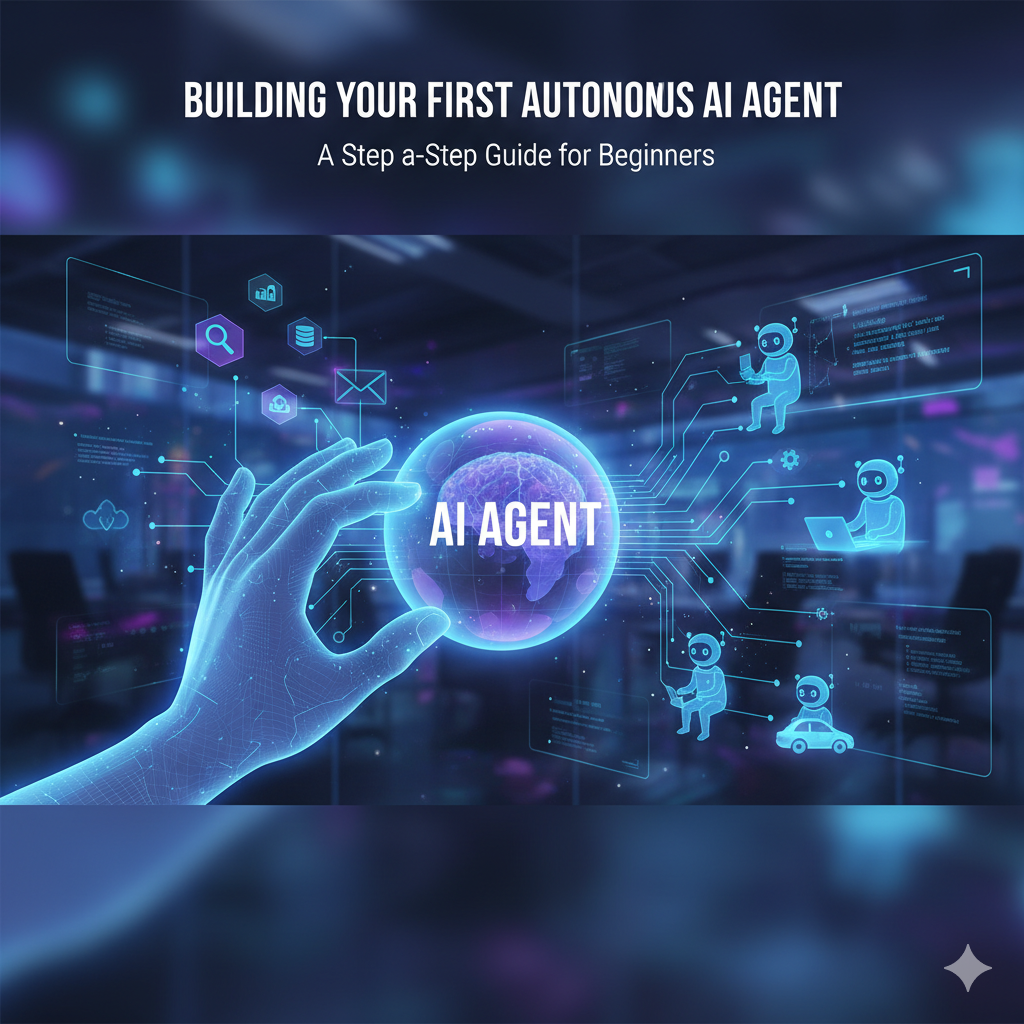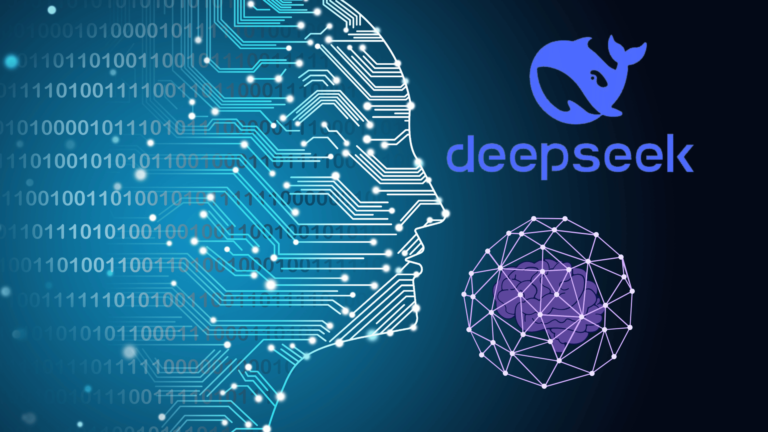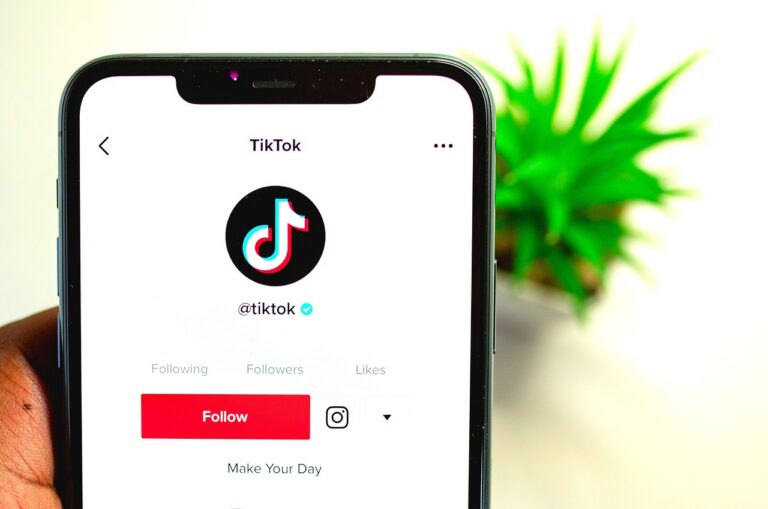Building Your First Autonomous AI Agent: A Step-by-Step Guide for Beginners 2025
Table of Contents
It starts with a feeling: that low, constant hum of repetitive tasks stealing your time, or the frustrating sense that you’re just managing a workflow instead of actually innovating. Perhaps you’ve spent countless hours manually sorting data, drafting email summaries, or switching between a dozen digital tools just to complete one simple project. You know there’s a better way.
For years, Artificial Intelligence was this abstract, intimidating force—something only PhDs could touch. But what if I told you that the power to automate your life and business, to go from managing tedious, multi-step tasks to creating an intelligent, autonomous partner, is now within your reach?
This guide is your map. We’re not just building a static chatbot that answers simple questions; we’re creating an independent, thinking entity—an AI agent—ready to follow a complex plan, utilize external tools, and even learn from its actions. This is the next frontier of productivity, and mastering it puts you leagues ahead. Let’s embark on the most exciting journey in tech right now and turn that digital potential into tangible, real-world autonomy.
Section 1: Decoding the AI Agent: Core Concepts for Beginners
Before you start building, you need to understand the fundamental mechanics. The shift from using a general Large Language Model (LLM) like a writing tool to deploying an autonomous AI agent is profound. It’s the difference between having a super-smart assistant who waits for your command and having a specialized employee who executes a project start-to-finish without supervision.
Agent vs. Assistant: The Critical Distinction
Your typical AI Assistant (like many consumer-facing chatbots) is primarily designed for conversation and information generation. It has a phenomenal memory for text but operates within a constrained environment.
An AI agent, however, is designed for action and autonomy. It possesses a critical, multi-stage loop that allows it to interact with the world: it can perceive its environment, reason about its goals, create a plan, and then execute that plan by using tools. Agents have a stateful memory that allows them to remember progress across multiple steps, making them truly autonomous.
The Key Components of an AI Agent Architecture
Every functional AI agent is built upon a modular architecture. Understanding these four core components will clarify what you need to configure in your own project:
- Perception (The Senses): This is the input mechanism. It gathers and interprets information from the environment. This could be a user’s text prompt, a trigger from an external system (like a new entry in a Google Sheet), or the results of a previous web search. It tells the agent the current state of the world.
- Planning/Reasoning (The Brain): This is the core Large Language Model (LLM) intelligence. When the agent receives input and a goal, the Reasoning Module uses its intelligence to break the complex objective down into smaller, actionable steps. This planning ability is the engine of autonomous AI.
- Memory (The Knowledge): Agents need both short and long-term memory.
- Short-Term Memory: The immediate context of the current conversation or task.
- Long-Term Memory: The agent’s knowledge base. This is often a Vector Database (RAG) that stores specific, proprietary data (like company policies or past customer interactions) that the agent can retrieve and use.
- Action/Tools (The Hands): This is the most crucial difference. The Action Module allows the agent to call external functions (APIs, code interpreters, web browsers) to interact with the world outside of the LLM itself. If your agent needs to search the web, it calls a search tool. If it needs to email a client, it calls an email tool.
Section 2: Choosing Your First AI Agent Project (Keep It Simple!)
The key to a successful first build is to choose a project that is specific, repetitive, and digital. Do not try to solve your company’s entire CRM problem on day one. Your first AI agent use case should be a task that you currently find tedious, yet involves clear steps.
3 Beginner-Friendly AI Agent Project Ideas
Focus on projects that showcase the agent’s ability to use a tool and follow a multi-step plan.
- The Research Summarizer:
- Input: A user provides a URL to a news article or white paper.
- Agent Steps: The agent is instructed to: 1) Browse the URL using a web-scraping tool. 2) Filter the content for key data points and conclusions. 3) Summarize the top five findings into a concise, professional, bulleted list.
- Value: Instant information synthesis without manual reading.
- The Data Sorter and Logger:
- Input: A trigger indicating a new email has arrived in a specific inbox (e.g., “sales leads”).
- Agent Steps: The agent is instructed to: 1) Read the email and extract the name, company, and primary request. 2) Use a Google Sheets tool to append this structured data to a master “New Leads” spreadsheet.
- Value: Automates lead capture and ensures clean, structured data logging.
- The Basic Lead Qualifier:
- Input: A list of customer names and company names.
- Agent Steps: The agent uses a web search or LinkedIn API tool to find the company’s recent press releases or main service offering. It then assigns a simple “Hot/Warm/Cold” qualification tag based on the latest activity and logs this to a database.
- Value: Pre-qualifies leads, saving a human sales representative significant research time.
Section 3: The Toolkit: Essential Platforms for Building Your AI Agent
The barrier to entry for building an AI agent is dramatically lower than it was even a year ago, thanks to innovative frameworks and visual builders. Your choice of tool depends on your comfort level with coding.
Choosing Your Agent Building Ecosystem
| Tool Type | Platform Examples | Best For | Technical Skill Level |
| No-Code/Low-Code | Make (formerly Integromat), Flowise, Dify, Zapier | Workflow Automation, Quick MVP, Visual Building | Beginner (No Coding Required) |
| Code Framework | LangChain (Python), CrewAI (Python) | Deep Customization, Complex Internal Logic, Multi-Agent Systems | Intermediate (Familiarity with Python) |
Export to Sheets
If this is truly your first project, start with a no-code AI agent platform like Flowise or Make. These tools allow you to visually design the workflow, connect the LLM, and integrate external applications simply by dragging and dropping nodes—no complex libraries or local setup required.
The Brain (The LLM): Regardless of your platform, your agent needs a powerful reasoning core. For modern autonomous tasks, you will want to select one of the top commercially available models (e.g., GPT-4o, Anthropic’s Claude 3.5, or Google’s Gemini). These models are optimized for multi-step reasoning and tool-use, which is the heart of a good LLM agent.
Section 4: The 5-Step Process to Build Your First Agent
This is the actionable AI workflow setup sequence. We will walk through the mental model and the technical steps necessary to bring your first agent to life.
1. Define the Goal (The North Star)
Your goal must be precise. Write it down: “The agent’s goal is to extract a lead’s contact details from an email and log them into our CRM, confirming the logging was successful.”
2. Design the Prompt/Persona (The Instruction)
The prompt is the most powerful and often overlooked component. It defines the agent’s personality, its boundaries, and how it handles ambiguity. This is where you conduct your AI agent prompt engineering.
The 4 Rules of a Strong Agent Prompt
- Role: Define who the agent is. (“You are a meticulous, error-checking data entry specialist.”)
- Goal: Restate the main objective clearly. (“Your single purpose is to parse the provided text and utilize your tools to log the necessary data.”)
- Tools Available: Explicitly list the tools it can use and when to use them. (“You have access to ‘CRM_API’ and ‘Web_Search’. Only use ‘Web_Search’ if a company name is missing.”)
- Constraints (Guardrails): Define what it must not do and the output format. (“NEVER hallucinate or invent data. Respond only with a final confirmation status.”)
3. Select and Configure the Tools (The Hands)
In your chosen platform (e.g., Flowise or LangChain), you must integrate the external services. For the Data Sorter agent, you would connect:
- Tool A: An Email Parser/Reader (Perception).
- Tool B: A Google Sheets or CRM API Connector (Action).
- Tool C: A Web Search Function (Fallback/Action).
Each tool must be configured with the necessary API keys and permissions.
4. Assemble the Workflow (The Logic Loop)
This step involves connecting the components you defined in your builder. The AI agent will follow this basic logic:
Input (Perception)→LLM Reasoning (Planning)→Tool Action→Action Outcome→Final Output
The reasoning step is where the LLM decides which tool to use next, based on the input and its current status. This chain reaction is what makes the agent “autonomous.”
5. Test, Evaluate, and Iterate
Deployment is not the finish line—it’s the start of the AI agent testing phase. Run multiple scenarios:
- Success Case: Provide a perfect email and verify the data logs correctly.
- Failure Case: Provide an incomplete email (e.g., missing the company name) and see if the agent correctly identifies the missing information and attempts to use its Web Search tool as instructed in the prompt.
- Boundary Case: Provide an out-of-scope request (e.g., “Write me a poem.”)—the agent should reject the task based on its strict Role and Constraints. If it fails a test, adjust the prompt first, then troubleshoot the tool configuration.
Section 5: Best Practices: Avoiding Common Beginner AI Agent Pitfalls
As you move from theory to practical building, keep these essential AI agent best practices in mind to ensure efficiency and reliability.
- Prompt Specificity is King: A generic prompt like “Help me manage leads” will fail. A hyper-specific prompt like, “Your ONLY output is a JSON object containing the fields: ‘name’, ‘company’, and ‘status’. If any field is empty, mark the status as ‘Incomplete,'” will succeed. The more you constrain the output, the more reliable your agent becomes.
- The Tool Reliability Test: Your autonomous AI agent is dependent on external tools. If your CRM’s API is slow, the agent will be slow. If an API key expires, the agent will fail its task. Prioritize tools known for stability and clear documentation.
- Managing LLM Costs (The Hidden Expense): Autonomous agents can fall into reasoning loops if their plan fails repeatedly. This can lead to unexpected high token usage. Always configure your builder to:
- Set a maximum number of steps for any single task (e.g., “If you fail three times, stop and ask for human intervention”).
- Monitor usage frequently during the initial training and testing period.
- The “Hallucination” Trap: Even the best LLMs can generate plausible but incorrect information. For your first build, never rely on the agent for factual verification. Include a “Human-in-the-Loop” step for critical decision points or final output reviews. This ensures both agent safety and data accuracy.
Conclusion: Your Autonomous Journey Has Just Begun
You have successfully navigated the architecture, planning, and build-out of your first intelligent, action-oriented AI agent. You’ve moved beyond the passive use of generative AI and stepped into the realm of true autonomous intelligence.
This isn’t just about automation; it’s about transformation. By building an agent, you have created a piece of technology that actively works for you, freeing up your cognitive energy for high-level strategy and creativity.
The next step is scaling. Start by challenging your first agent with more data, then integrate a second, specialized agent, connecting them to create a powerful multi-agent system.
Take Action Now: Pick that one task you dread doing this week—the data entry, the research summary, the form sorting—and use the 5-step process outlined here to build an agent that does it for you. Your journey into the autonomous future starts with that single click of the “Deploy” button.
AI Agent FAQ (Frequently Asked Questions)
What is the difference between a chatbot and an AI agent?
A chatbot is primarily designed for conversation and providing information. Its capabilities are often limited to the data it was trained on. Conversely, an AI agent is designed for action. Agents have the ability to call external tools (APIs, databases, web search) to complete multi-step, real-world goals autonomously without needing a human to prompt each step.
Do I need to know how to code to build my first AI agent?
No. While code frameworks like LangChain offer maximum customization, platforms like Flowise, Make, and Zapier allow you to build functional, multi-step AI agents using a visual, drag-and-drop interface. These low-code tools are perfect for beginners focused on workflow automation and logic design.
What is the most crucial component for a successful autonomous AI agent?
The most crucial part is a clear, constrained System Prompt combined with reliable Tools. The prompt ensures the agent knows its role, goal, and limits (the thinking part), while the tools allow it to interact with the environment (the doing part). Poor planning or unreliable tools will always result in a failed execution.






